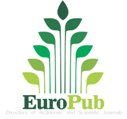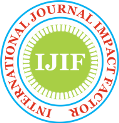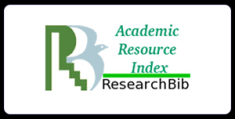CHOLESTEROL LOWERING POTENTIAL OF SEABUCKTHORN
Abstract
The present study was designed to investigate the effect of Seabuckthorn on lipid profile, its antioxidant potency and its effect on hemodynamic changes and baroreceptor mediated blood pressure regulatory mechanisms in hypercholesterolemic rats. For induction of hypercholesterolemia rats were fed with fructose in drinking water and in vivo experiment had done to investigate the hemodynamic as well as the biochemical profile of seabuckthorn. It is a natural product and investigations carried out so far do not report any apparent toxic effect. Based on the results of the present study, it is recommended that seabuckthorn pulp oil may be supplemented with normal diet for providing protection against hypercholesterolemia. The fall in blood pressure of animals having a normal lipid profile suggests that it may have a hypotensive effect. Hence, its use as a lipid-lowering agent needs to be carefully monitored especially in people with cardiac problems. Conclusive evidence shows that baroreceptor modulation of heart rate is impaired in animals and patients with atherosclerosis. It has been suggested that oxygen free radicals produced in atherosclerosis may contribute to baroreceptor dysfunction. Seabuckthorn prevented the development of hypertension and reduced insulin resistance in chronically fructose-fed rats and reduced vascular superoxide anion production through lowering the NAD (P) H oxidase activity in hypertensive rats.
KEYWORDS: Hypercholesterolemia, Hypertension, Atherosclerosis, Baroreceptor dysfunction, Free radicals.
Downloads
Copyright (c) 2018 Author

This work is licensed under a Creative Commons Attribution 4.0 International License.
The Authors retain copyright (full ownership) to their content published in the Journal. We claim no intellectual property rights over the material provided by any User in this Journal. However, by setting pages to be viewed publicly (Open Access), the User agrees to allow others to view and download the relevant content. In addition, Open Access articles might be used by the Provider, or any other third party, for data mining purposes.
The Provider reserves the rights in its sole discretion to refuse or remove any content that is available via the Website.



















